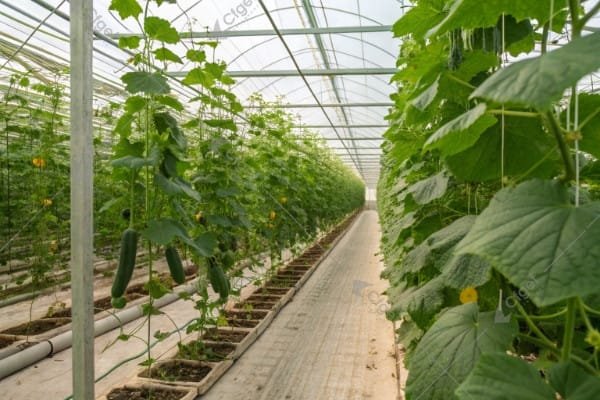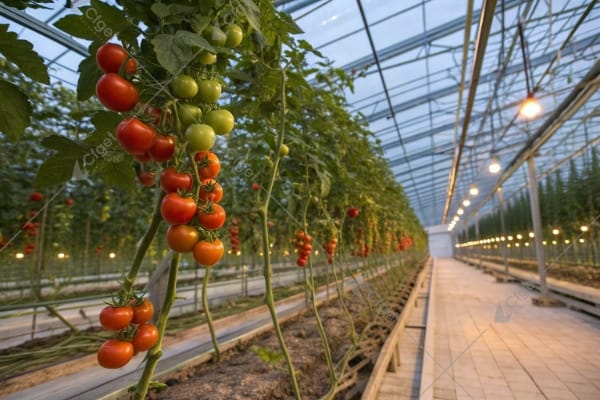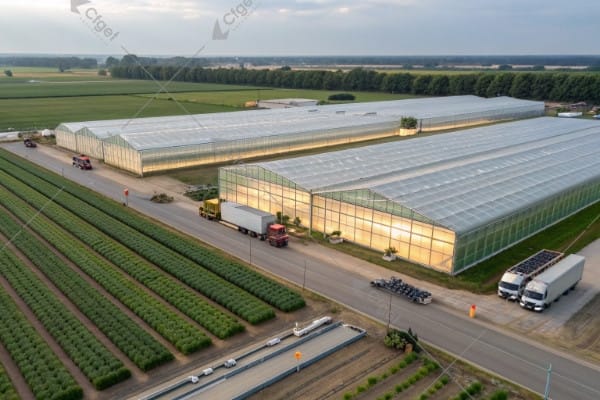Extreme heat destroys crops faster than most growers realize. Your greenhouse becomes an oven without proper cooling. The solution exists, but choosing wrong costs everything.
Effective greenhouse cooling in hot climates requires strategic ventilation systems, advanced shading solutions, and targeted cooling technologies. These three elements work together to maintain optimal growing temperatures while minimizing energy costs and maximizing crop productivity.
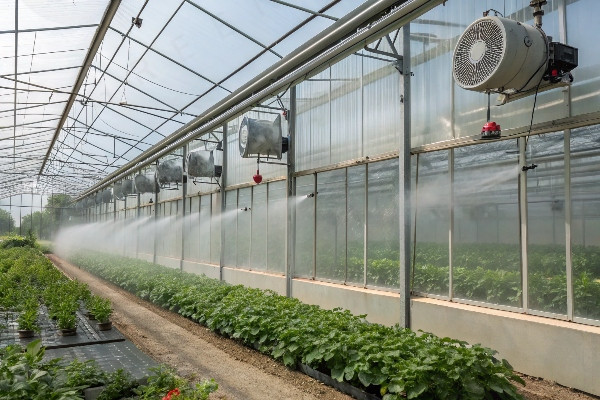
After 29 years of designing greenhouse systems across various climates, I’ve witnessed countless growers struggle with temperature control in extreme heat. The difference between success and failure often comes down to understanding how these cooling elements interact with your specific climate conditions and crop requirements.
Don’t Miss:——Commercial Hydroponic Greenhouse Systems: How Do Design, Construction, and ROI Interconnect?
You might like:——What is a Smart Greenhouse? The Ultimate Guide to Automated Growing
What is the role of a greenhouse ventilation system in high temperatures?
Poor ventilation turns your greenhouse into a death trap for plants. Hot air accumulates rapidly. Your crops suffer stress within hours.
Natural and mechanical ventilation systems remove excess heat by creating air circulation patterns that replace hot interior air with cooler exterior air. Proper ventilation can reduce greenhouse temperatures by 10-15°F compared to sealed structures.
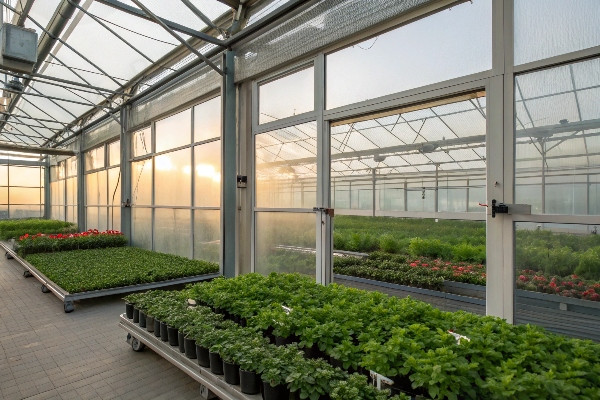
In my experience working with growers across Southeast Asia and Central Asia, ventilation design becomes critical when exterior temperatures exceed 90°F. We typically recommend maintaining greenhouse shoulder heights around 6 meters in hot climates. This increased height creates more air volume, allowing hot air to rise naturally while cooler air enters through lower vents.
The physics behind effective ventilation relies on the stack effect and wind-driven airflow. Hot air naturally rises, creating pressure differences that drive air movement when properly designed openings exist. We design ventilation systems with intake vents positioned low on the windward side and exhaust vents placed high on the leeward side.
For our clients in tropical regions, we’ve found that natural ventilation alone can handle temperatures up to 95°F when combined with proper greenhouse orientation and adequate vent sizing. The rule of thumb we follow requires vent area equal to at least 20% of the floor area, with continuous ridge and sidewall vents providing the best results.
Natural Ventilation Components
| Component | Function | Sizing Requirement |
|---|---|---|
| Ridge Vents | Hot air exhaust | 15-20% of floor area |
| Sidewall Vents | Cool air intake | 15-20% of floor area |
| End Wall Vents | Cross ventilation | 10-15% of wall area |
Mechanical ventilation becomes necessary when natural airflow cannot maintain acceptable temperatures. We install exhaust fans rated to provide 1-1.5 air changes per minute in extreme heat conditions. The fan sizing calculation considers greenhouse volume, desired temperature differential, and local climate data.
How do shading systems help lower greenhouse temperature?
Direct sunlight overheats greenhouses within minutes during peak hours. Plants wilt despite adequate water. Shading provides immediate relief but affects photosynthesis.
External and internal shading systems reduce solar heat gain by 40-70%, lowering greenhouse temperatures while filtering excessive light. External shading proves more effective by preventing heat from entering the structure initially.
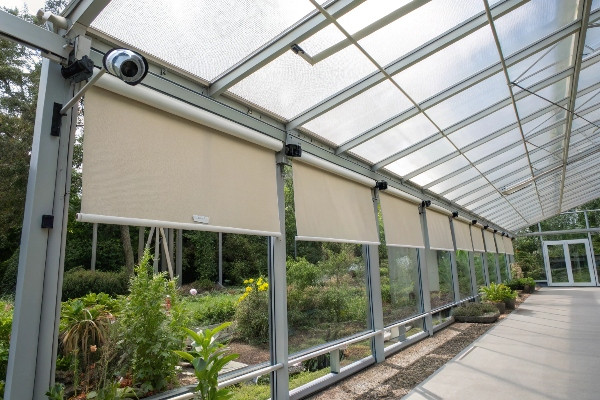
Shading systems work by intercepting solar radiation before it converts to heat energy inside the greenhouse. The key lies in selecting appropriate shade percentages and deployment strategies that balance temperature control with light requirements for plant growth.
External shading systems provide superior cooling performance because they prevent solar energy from entering the greenhouse structure. We typically install retractable shade cloth systems that can adjust coverage from 30% to 70% based on weather conditions and crop needs. These systems use light sensors and temperature controllers to automatically deploy when conditions exceed preset thresholds.
Internal shading systems cost less to install but prove less effective for temperature control since heat already entered the structure. However, they offer better light distribution and protect against sudden weather changes. We often combine both systems for clients growing high-value crops in extremely hot regions.
The material selection significantly impacts cooling effectiveness. Aluminized shade cloth reflects more heat than standard woven materials, reducing cooling loads by an additional 15-20%. White or silver reflective surfaces work better than colored materials for temperature control, though some crops benefit from specific light spectrums provided by colored screens.
Shading System Comparison
| System Type | Temperature Reduction | Light Control | Cost Level |
|---|---|---|---|
| External Fixed | 40-50% | Basic | Low |
| External Retractable | 50-70% | Precise | High |
| Internal Moveable | 30-40% | Excellent | Medium |
| Combination Systems | 60-80% | Superior | Highest |
Timing matters as much as coverage percentage. We program automated systems to begin shading when solar radiation exceeds 600 watts per square meter, typically occurring between 10 AM and 4 PM in hot climates. The systems retract during cloudy periods to maximize photosynthetic light availability.
How does a pad-and-fan cooling system work?
High temperatures persist despite ventilation and shading efforts. Traditional methods reach their limits. Active cooling becomes the only viable solution.
Pad-and-fan systems cool air through evaporation as water evaporates from cooling pads while exhaust fans pull air through the saturated media. This process can reduce temperatures by 15-25°F in dry climates.
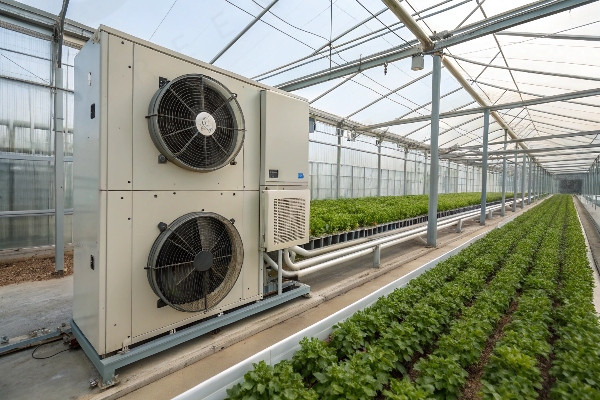
The pad-and-fan cooling system1 operates on evaporative cooling principles, where water phase change from liquid to vapor removes heat energy from the air stream. This process works most effectively in climates with low relative humidity, where evaporation occurs readily.
Water distribution systems keep cooling pads saturated while exhaust fans create negative pressure that pulls outside air through the wet media. The pad material, typically cellulose or synthetic media, provides maximum surface area for air-water contact while maintaining structural integrity under continuous water flow.
System sizing requires careful calculation of air flow rates, pad area, and water circulation capacity. We design these systems to provide 1.5 to 2.0 air changes per minute, with pad face velocity maintained between 150-250 feet per minute for optimal cooling efficiency. Higher velocities reduce cooling effectiveness and increase pressure drop across the pads.
The cooling effectiveness depends heavily on outside air conditions. In dry climates with relative humidity below 60%, these systems can achieve temperature reductions of 20-25°F. However, effectiveness decreases significantly as humidity rises, making them less suitable for tropical coastal regions where humidity often exceeds 80%.
Water quality significantly impacts system performance and maintenance requirements. We recommend water treatment systems to prevent mineral buildup and algae growth in the cooling pads. Regular maintenance schedules include pad cleaning, water system disinfection, and fan belt inspection to ensure consistent performance.
Pad-and-Fan System Specifications
| Climate Type | Humidity Range | Expected Cooling | Recommended Use |
|---|---|---|---|
| Arid Desert | 10-30% | 20-25°F | Excellent |
| Semi-Arid | 30-50% | 15-20°F | Good |
| Moderate Humid | 50-70% | 10-15°F | Fair |
| High Humid | 70%+ | 5-10°F | Poor |
For our clients in Central Asia, where dry conditions prevail, pad-and-fan systems provide excellent results with reasonable operating costs. The key lies in proper system integration with existing ventilation and shading systems to optimize overall cooling performance while minimizing energy consumption.
Which greenhouse designs aid in heat dissipation?
Standard greenhouse designs trap heat efficiently but poorly for hot climates. Structure modifications become essential. Design changes impact both cooling effectiveness and construction costs.
Greenhouse designs that enhance heat dissipation include increased height, improved ventilation layouts, reflective materials, and strategic orientation. These modifications can reduce cooling loads by 25-40% compared to standard designs.
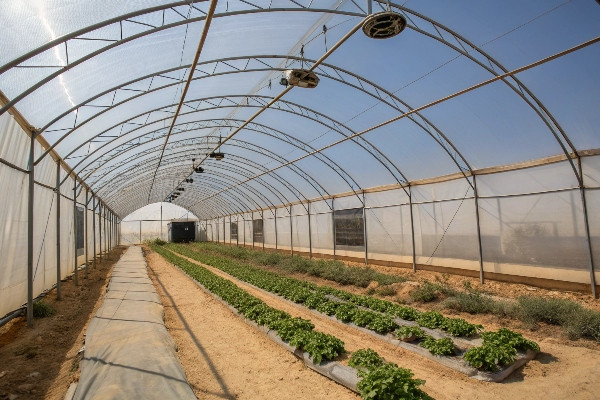
Greenhouse architecture plays a fundamental role in heat management, with design decisions affecting both passive cooling potential and active system requirements. The structural modifications we implement for hot climate applications go beyond standard greenhouse designs to optimize heat dissipation through multiple pathways.
Building height represents the most critical design factor for hot climate greenhouses. We maintain shoulder heights of 6 meters or higher to create larger air volumes that accommodate natural temperature stratification. Hot air accumulates in the upper zone while the crop canopy remains in cooler air near ground level. This vertical temperature gradient reduces plant stress while improving natural ventilation effectiveness.
Roof design significantly influences heat load management. We employ steep roof angles (35-45 degrees) that facilitate hot air movement toward ridge vents while reducing the roof surface area exposed to direct solar radiation during peak sun hours. Curved roof profiles provide even better performance by eliminating flat surfaces that accumulate radiant heat.
Ventilation design integration starts during the structural planning phase. We position continuous ridge vents running the full greenhouse length, sized to provide unrestricted hot air exhaust. Sidewall vents receive equal attention, with louvre systems that can open to 100% of wall area when necessary. This design approach eliminates ventilation bottlenecks that create hot spots within the growing environment.
Material selection focuses on minimizing heat absorption and maximizing heat reflection. Double-layer polycarbonate panels with reflective coatings reduce heat transmission by 30% compared to standard materials. White or silver structural components reflect rather than absorb solar radiation, reducing radiant heat transfer to the interior space.
Heat Dissipation Design Features
| Design Element | Heat Reduction Impact | Implementation Cost | Maintenance Requirement |
|---|---|---|---|
| Increased Height | 15-20% | Medium | Low |
| Steep Roof Angle | 10-15% | Low | Low |
| Reflective Materials | 20-25% | High | Medium |
| Enhanced Ventilation | 25-30% | Medium | Medium |
Greenhouse orientation becomes critical in hot climates where solar angle and prevailing wind direction affect cooling performance. We align the ridge line perpendicular to prevailing winds to maximize cross-ventilation while orienting the structure to minimize east-west sun exposure during peak temperature hours.
For our clients investing in high-value crop production, we often recommend semi-closed greenhouse systems that combine passive design features with active environmental control. These systems create isolated growing zones within the larger structure, allowing precise temperature management for specific crop areas while maintaining energy efficiency through reduced space conditioning requirements.
Conclusion
Successful greenhouse cooling combines proper ventilation, effective shading, and appropriate cooling systems tailored to your specific climate conditions and crop requirements.
-
Explore this link to understand the mechanics and benefits of pad-and-fan cooling systems, especially in arid climates. ↩

